The world's aircraft boneyards, where planes go to die
Where aircraft go to retire – and die
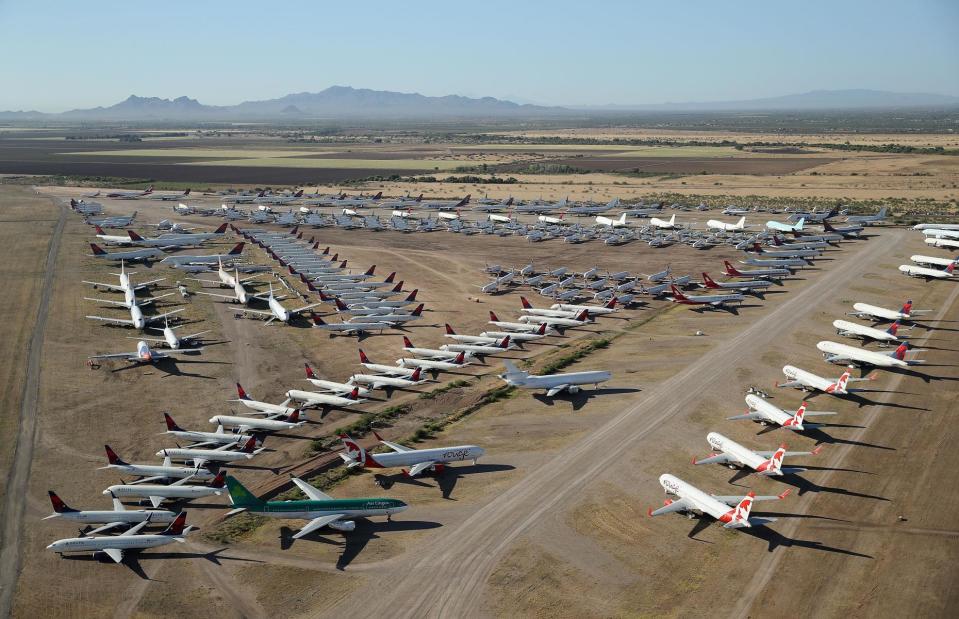
Christian Petersen/Getty Images
Creepily breathtaking, the planet's largest aircraft graveyards, aka boneyards, give off serious post-apocalyptic vibes. These massive aviation cemeteries, which tend to be located in eerie, remote locations, serve as the final resting places for decommissioned planes, helicopters and other flying machines, which are salvaged for parts and eventually scrapped. Boneyards are used for storage and maintenance too and really came into their own during the pandemic when countless commercial planes were grounded.
Read on to discover the biggest boneyards around the globe and find out which ones you can actually visit...
Twente Airport, Enschede, Netherlands
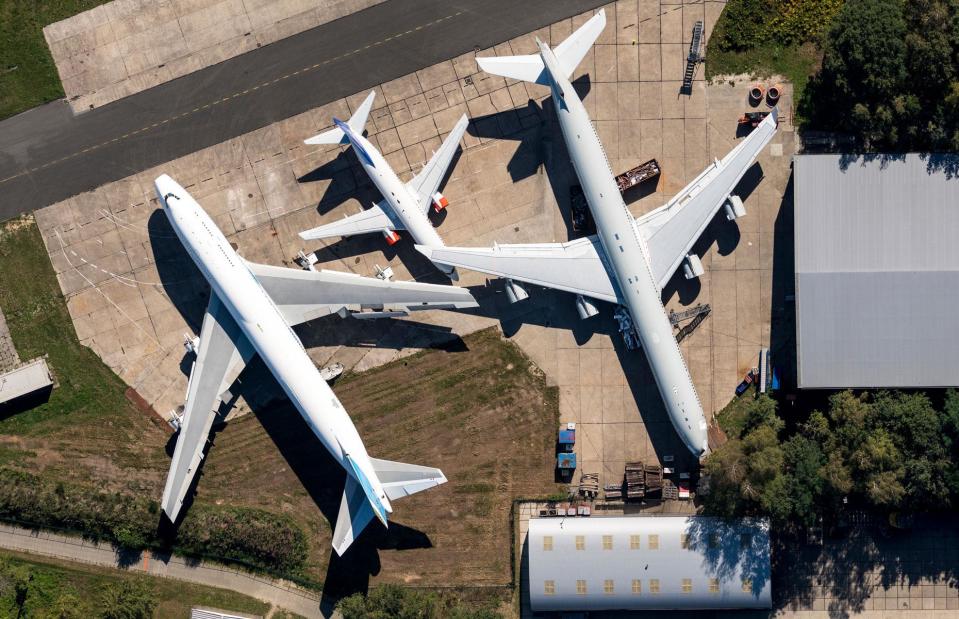
Aerovista Luchtfotografie/Shutterstock
The US is home to the majority of major boneyards but there are several notable facilities in Europe and elsewhere. They include Twente Airport in the Netherlands. Dating from 1931, the 220-acre complex was taken over and expanded by the Nazis during the Second World War. Following the conflict, it became a joint-use airport, utilised for both military and civil aviation, but operations ceased in 2008. While local flying clubs continued to use it, the site's days seemed numbered. Since then, Twente has reinvented itself as a living lab testing sustainable forms of aviation, not to mention a busy boneyard.
Twente Airport, Enschede, Netherlands
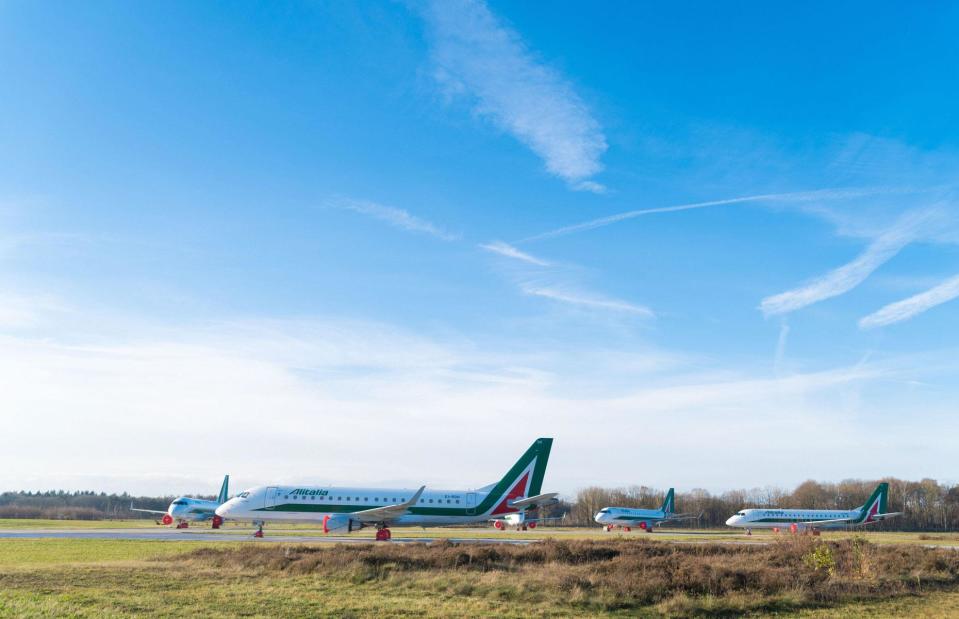
hans engbers/Alamy
In 2016, Aircraft End-of-Life Solutions (AELS), the only company in the world that handles the entire supply chain for aircraft disassembly, dismantling and recycling, set up a boneyard at the airport. To date, AELS has processed more than 75 aircraft there, including retired Air France, KLM and British Airways jets. During the darkest days of the pandemic in 2020, Twente Airport was used to mothball six Lufthansa 747s. The following year, five Embraer 175s formerly owned by bankrupt Alitalia and now belonging to Nordic Aviation Capital arrived at the airport for long-term storage. The airport is currently out of bounds to the public and surrounded by a protected nature reserve, so visiting is a no-no, sadly.
Chateauroux-Centre 'Marcel Dassault' Airport, Chateauroux, France
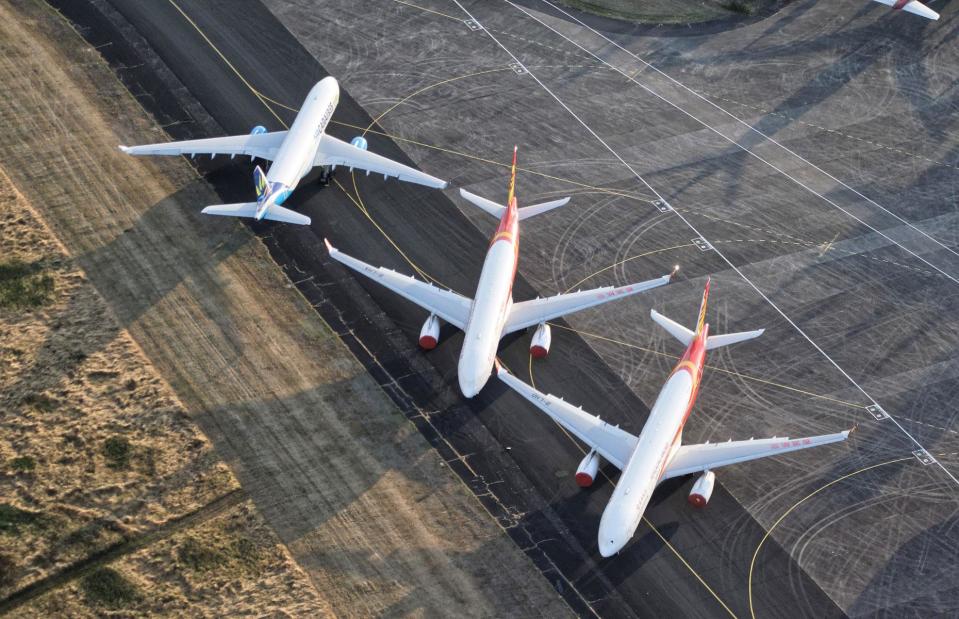
Dylan Agbagni (CCO), Flickr CC CC0 1.0 Universal
Located slap bang in the middle of France, Chateauroux-Centre 'Marcel Dassault' Airport started out as a basic airfield way back in the late 1900s. In 1936, the airfield was chosen as the site for aviation pioneer Marcel Dassault's groundbreaking factory and was later named in his honour. Chateauroux-Centre was taken over by the Nazis in the Second World War and then commandeered by the American military, which used it as an airbase until 1967. The airport returned to civilian use in 1974. During the 1990s and early 2000s, it was a training ground for Concorde pilots. In 2007, the regional council opted to develop the airport's air freight and maintenance facilities, which led to the creation of Chateauroux Air Centre, a one-stop boneyard for aircraft storage, maintenance, scrapping and recycling.
Chateauroux-Centre 'Marcel Dassault' Airport, Chateauroux, France
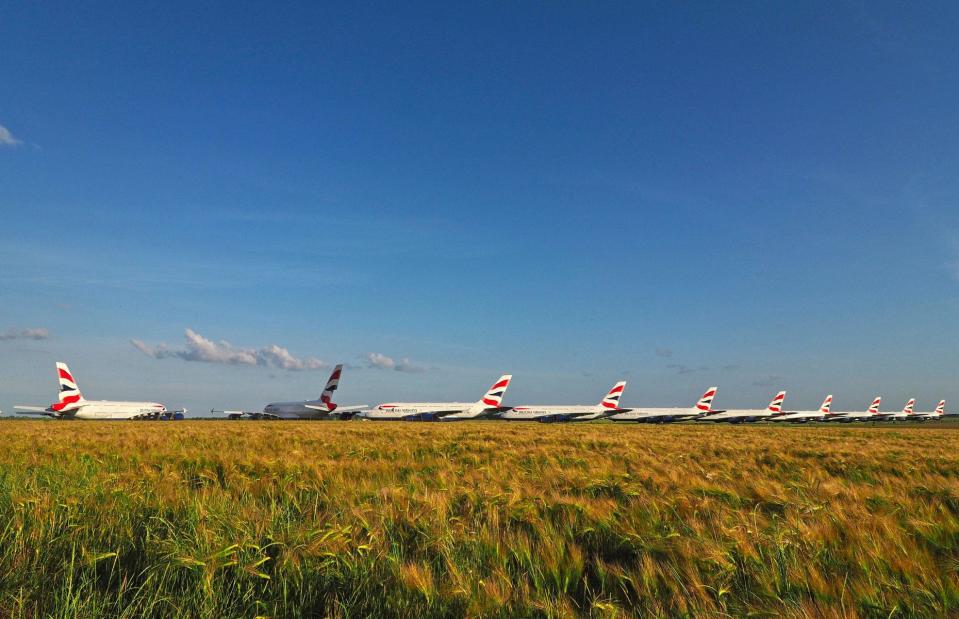
GUILLAUME SOUVANT/AFP via Getty Images
The 98-acre boneyard, which boasts a 100,000-square-foot (9,290sqm) maintenance hangar, has attracted an array of specialist firms, including leading industry player Dale Aviation. The boneyard reportedly stored over 40 airlines during the pandemic, including British Airways' fleet of 11 A380s. Though planes are broken up here, Chateauroux-Centre has emerged as more of a hub for maintenance than recycling, and is now one of the top sites globally for aircraft paint jobs. Chateauroux Air Centre is off limits but you can visit the airport, which opens for seasonal passenger flights, and check out the planes on the runway from the main approach road.
Cotswold Airport, Kemble, UK
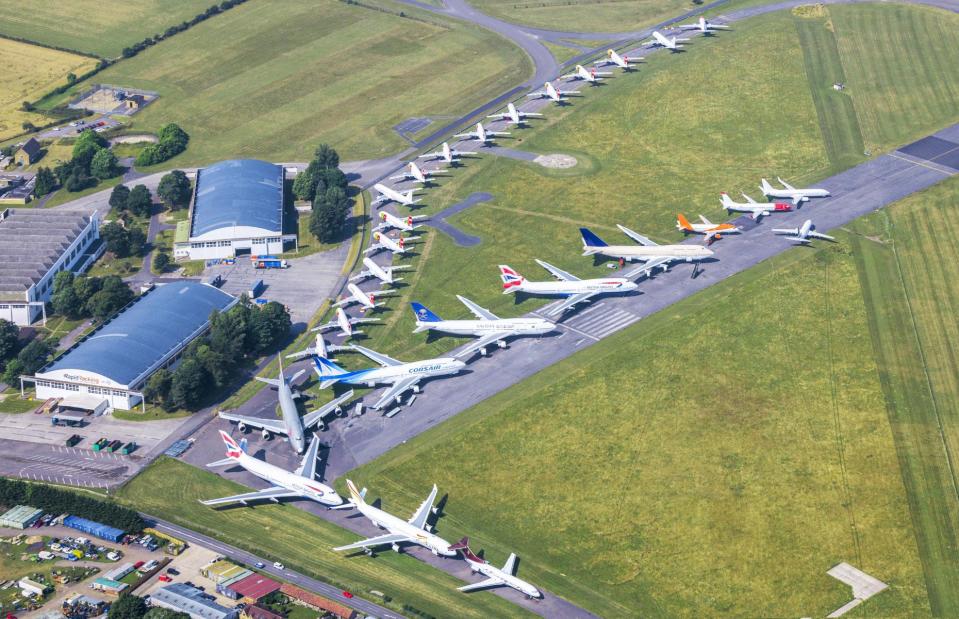
David Goddard/Getty Images
An average of 650 commercial aircraft were retired annually over the past decade and the aircraft recycling business is worth an estimated £3.2 billion ($4bn) in 2024. The figure is set to soar over the next few years as airlines replace their fleets with more fuel-efficient models and put even greater emphasis on sustainability. One of Europe's leading airline recycling boneyards is located at Cotswold Airport in the UK. It opened in 1936 as RAF Kemble and played a pivotal role in the Second World War as a training ground for pilots and staging point for cross-Channel attacks. From 1966 to 1983, the airport was the HQ for the Red Arrows aerobatic team. It morphed into a boneyard in the early Noughties.
Cotswold Airport, Kemble, UK
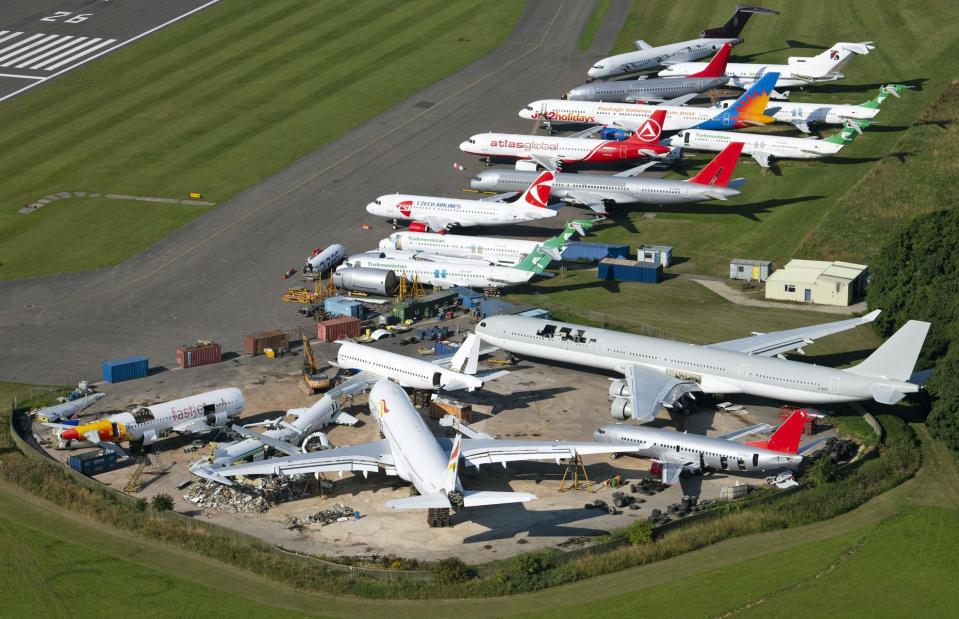
Matthew Horwood/Getty Images
Today, a number of aircraft recycling firms operate out of the 532-acre airport, including Air Salvage International, which looks after up to 60 planes a year. Business boomed during the pandemic lockdowns as the skies emptied of aircraft and Cotswold Airport was the final destination for several British Airways 747s. One of the planes, a vintage Negus-liveried 747, has been preserved for posterity on the site. Cotswold Airport has a lucrative sideline as a TV and movie location and features in Amazon Prime spy thriller Alex Rider. Unlike most boneyards, the airport positively welcomes visitors and is open to the public five days a week.
Tarbes–Lourdes–Pyrenees Airport, Tarbes, France
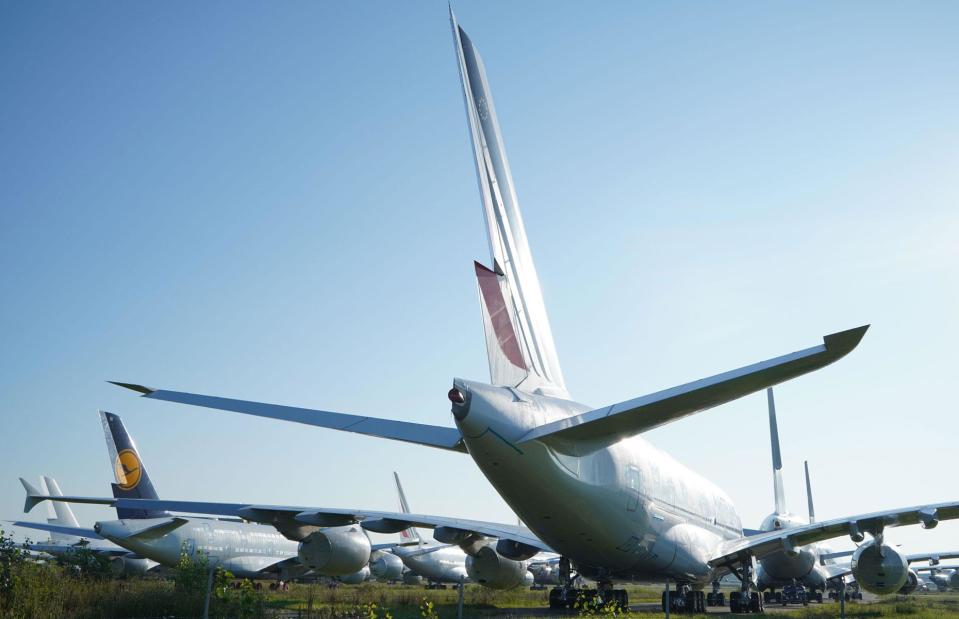
Matt Matthews/Alamy
Tarbes-Lourdes-Pyrenees Airport in southwest France opened in 1948, mainly as a gateway for pilgrims visiting the nearby Catholic Sanctuary of Our Lady of Lourdes. The airport, which has welcomed two popes in its history, is renowned for being one of the first to offer comprehensive assistance for passengers with illnesses or disabilities, who have long made up a large proportion of Lourdes visitors. The airport was completely rebuilt in 1999, setting new standards for accessibility. In 2007, industry bigwigs including Airbus created a storage, maintenance and green recycling company called TARMAC Aerosave. Tarbes-Lourdes-Pyrenees Airport was selected as its HQ and first boneyard.
Tarbes–Lourdes–Pyrenees Airport, Tarbes, France
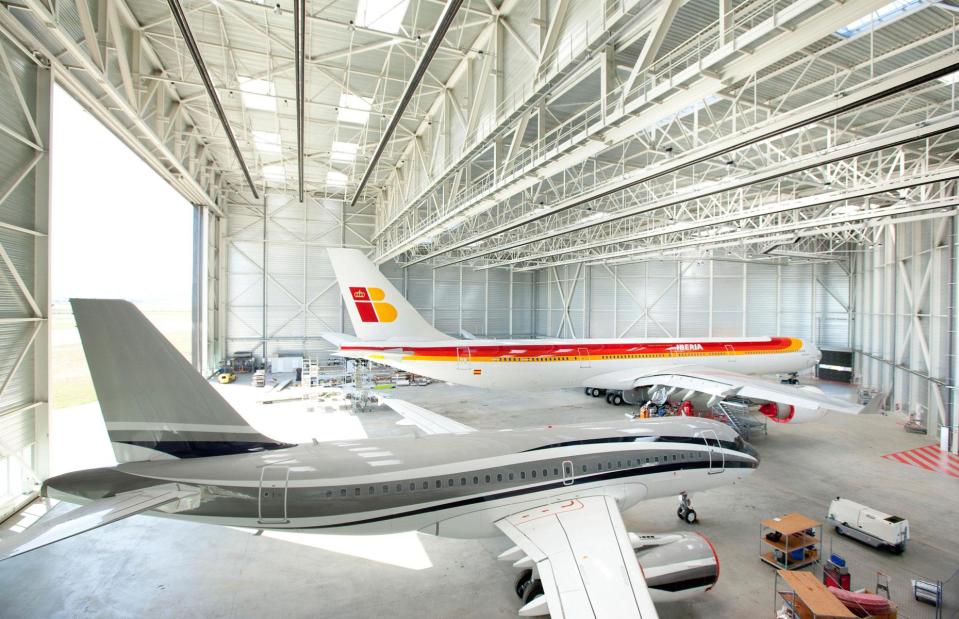
Andia/Alamy
TARMAC Aerosave is now Europe's leader in the field. By 2020, the firm had hosted 1,000 planes across its three sites in France and Spain, including Tarbes–Lourdes–Pyrenees Airport, which has capacity for 100 aircraft. Like the world's other major boneyards, the airport was a hive of activity during the pandemic when TARMAC Aerosave stowed a total of 225 planes across its trio of locations. None of these facilities are open to the public but some of the retired aircraft in storage and on death row at the airport can be viewed from the perimeter road and passenger terminal building.
San Bernardino International Airport, San Bernardino, USA
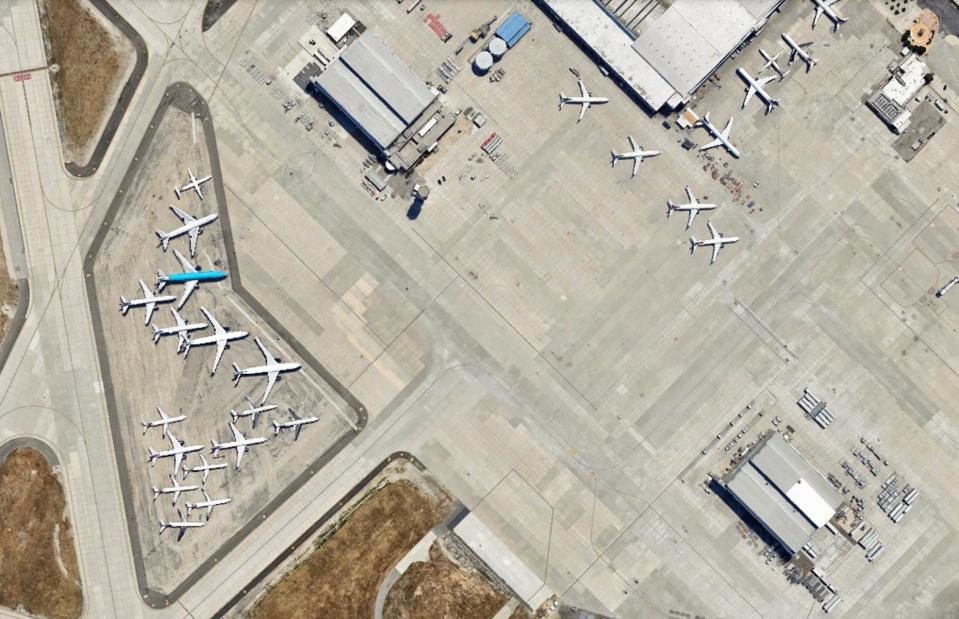
Google Earth
This dinky regional Californian airport 60 miles (97km) away from Downtown Los Angeles features a not-so-dinky boneyard. San Bernardino International Airport began as Norton Air Force Base, which dates from the Second World War and was decommissioned in 1994. The facility was repurposed as a civilian airport not long after. It was then upgraded, enticing aviation storage and recycling firms. While it started operating commercial flights in 2022, the airport's boneyard remains the key focus.
San Bernardino International Airport, San Bernardino, USA
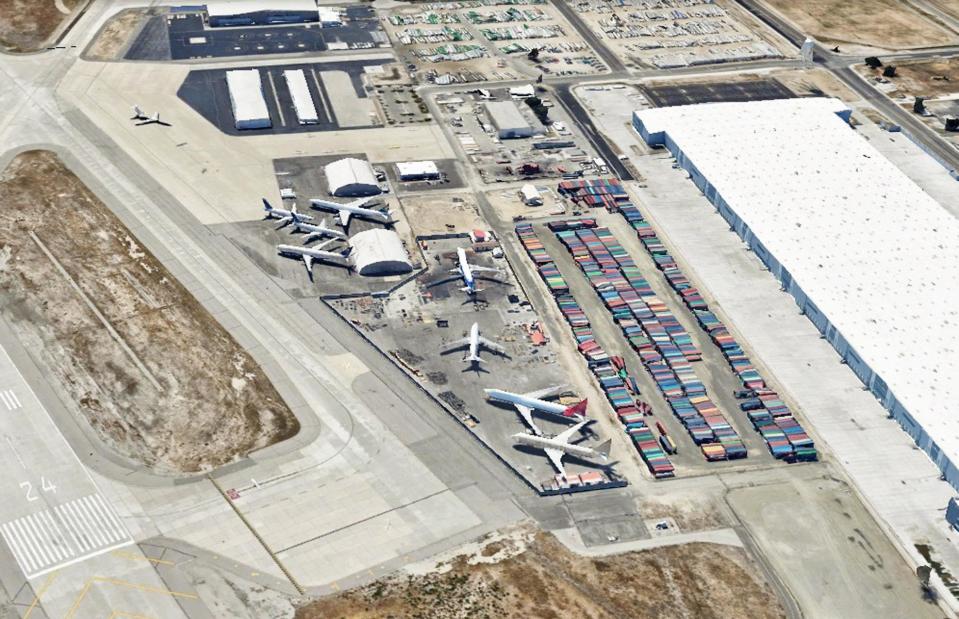
Google Earth
A bunch of companies offer storage, maintenance and recycling services at the airport, including Aero Pro, Pulsar Aviation Services and Unical, which operates out of a 125,000-square-foot (11,613sqm) hangar. Access to the boneyard is restricted but you can of course head to the airport and catch a glimpse of some of the planes from the terminal building. While you're there, you could also visit the Norton Air Force Base Museum a stone's throw from the site that documents the history of the military installation.
Arkansas International Airport, Blytheville, USA
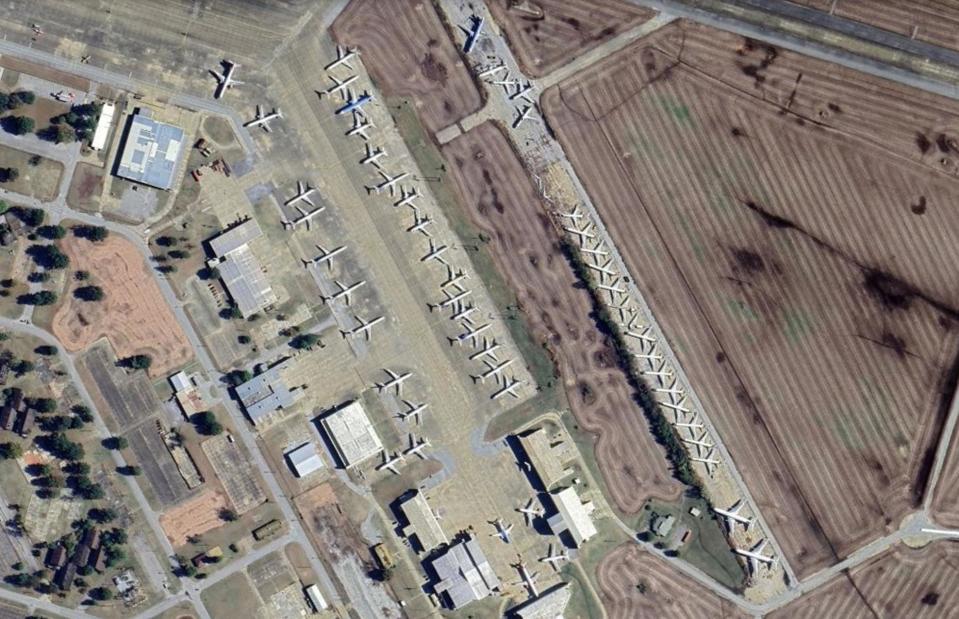
Google Earth
Boneyards in the US tend to be located in the arid West, where the dry climate helps prevent corrosion. Among the exceptions is the 1,100-acre Arkansas International Airport in humid Blytheville. Like San Bernardino International Airport, it started out as a US Air Force base and was converted into a civilian airport in the 1990s. The airport is packed with amenities thanks to its origins as a military base, including 5,000,000 square feet (465,000sqm) of ramp space and six full-sized hangars.
Arkansas International Airport, Blytheville, USA
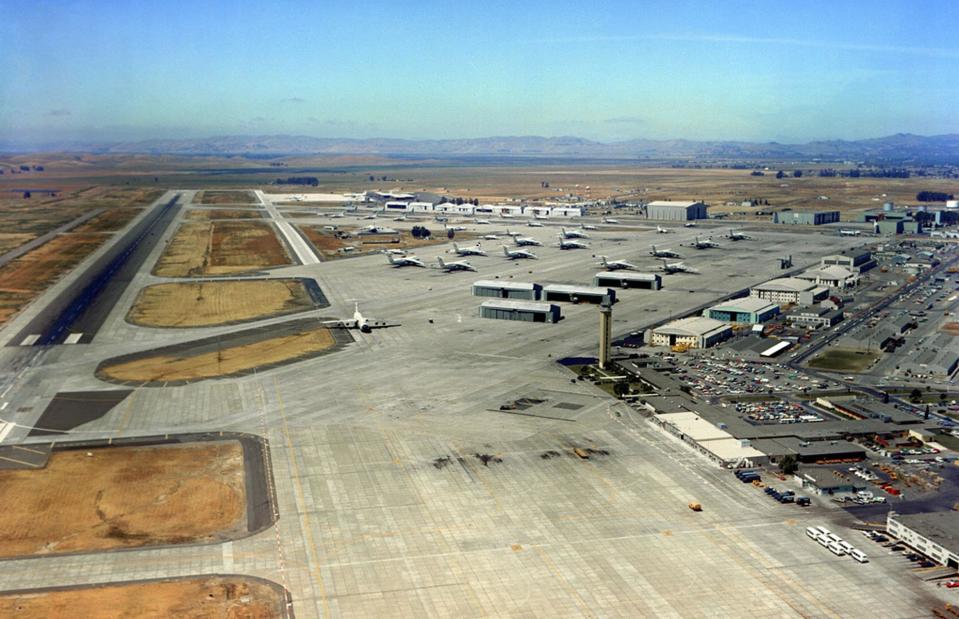
U.S. National Archives/Public domain
Despite the unfavourable climate, Florida's Aviation Repair Technologies (ART) was lured by Arkansas International's generous facilities and set up its flagship aircraft maintenance and dismantling facility at the airport in 2008. The firm's boneyard, which has space for 107 planes, accommodated 77 grounded commercial jets during the pandemic in 2020. That same year, it accepted delivery of Delta's retired MD-88s and MD-90s 'Mad Dogs' after the facility was selected as the final resting place for these iconic aircraft. The boneyard doesn't allow visitors but a good proportion of the planes in storage there can be spotted from the surrounding roads.
Alice Springs Airport, Alice Springs, Australia
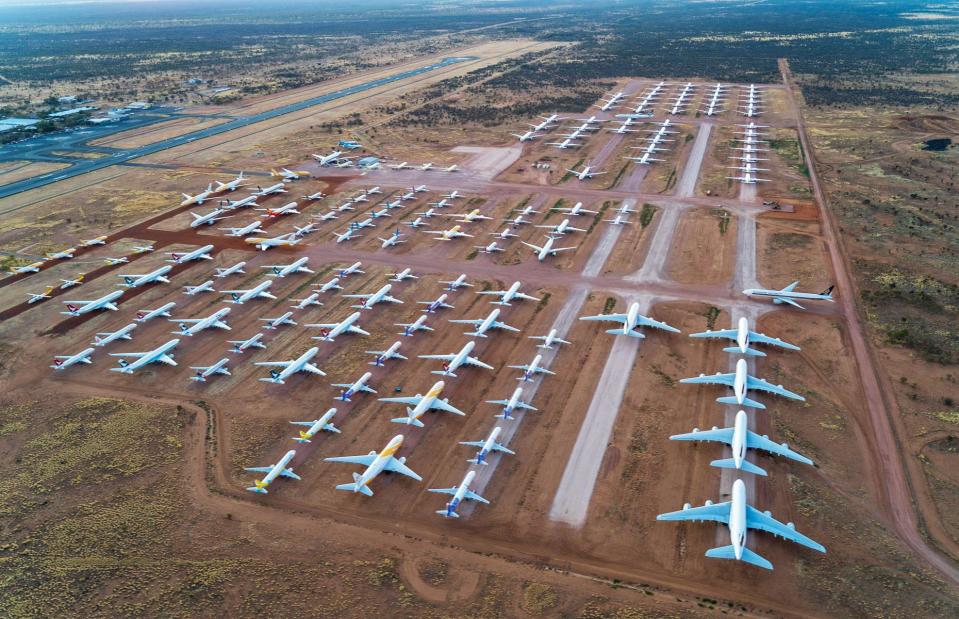
Trung Nguyen/Alamy
The largest boneyard in the southern hemisphere, Asia Pacific Aircraft Storage at Alice Springs Airport in Australia's Northern Territory is the leading place where planes go to die Down Under. The isolated outback facility was completed in 2013 and became operational the following year. The site was chosen thanks to its optimum conditions which minimise rust – the Alice Springs climate is extremely arid while air pollution is exceedingly low. Other favourables include the area's alkaline red soils, which also help prevent erosion.
Alice Springs Airport, Alice Springs, Australia
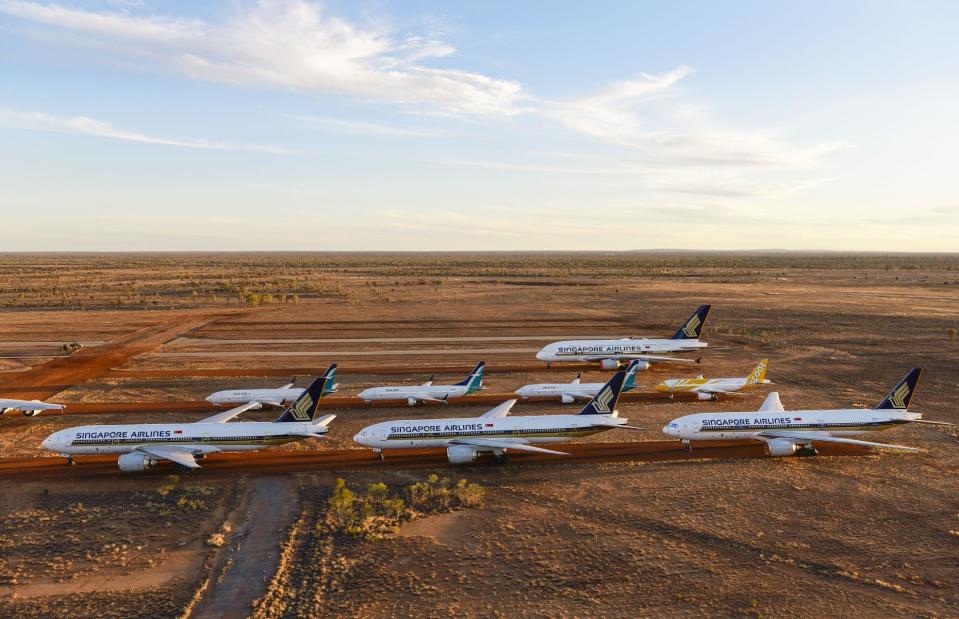
Steve Strike/Getty Images
Spread over 271 acres, the boneyard started small and was subsequently expanded to accommodate 110 large planes. It now has space for up to 200. Defunct commercial airliners are stripped for parts at the airport, which is handily located near a major railway line that can transport them around Australia. But Alice Springs Airport is principally an aircraft storage hub. In 2019, it housed grounded 737 MAX planes. And during the height of the pandemic, 152 airliners including Singapore Airlines and Cathay Pacific jets were stored at the facility. In 2023, the number had dropped to 45, but according to Asia Pacific Aircraft Storage boss Tom Vincent, business continues to be brisk.
Teruel Airport, Teruel, Spain
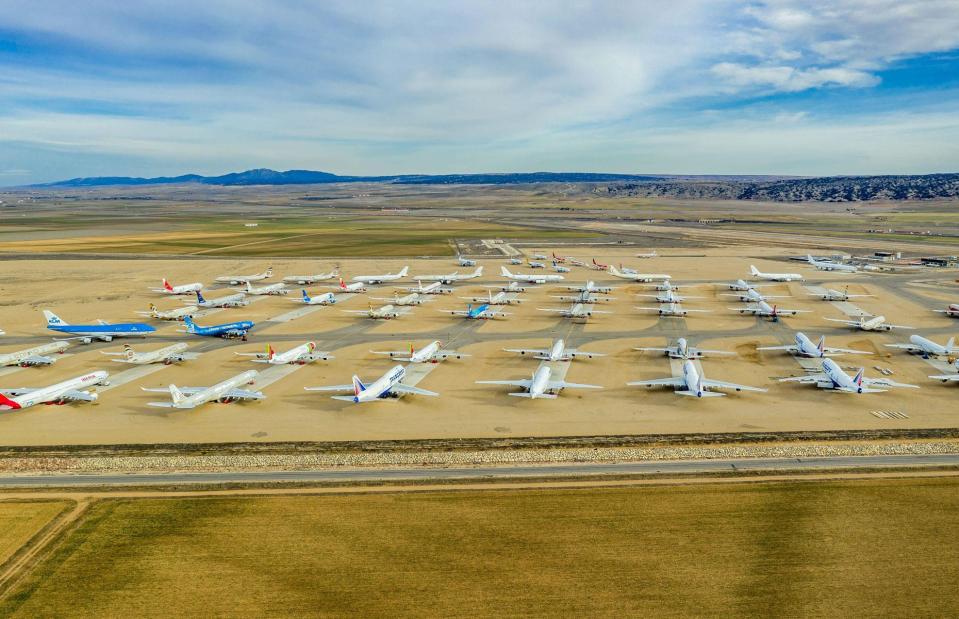
Tomka/Alamy
The largest boneyard outside the US, Teruel Airport covers an impressive 1,359 acres and includes an 81-acre industrial zone. Located on a remote high plateau in eastern Spain, it has a tinder-dry climate and low pollution levels, which as we've discovered, are ideal for airline storage, maintenance and parts-reclamation. Repurposed from a Spanish Civil War-era aerodrome, Teruel Airport opened in 2013 as a storage and recycling centre for TARMAC Aerosave, to complement the original facility at Tarbes–Lourdes–Pyrenees Airport. The company's third and smallest facility is located at France's Toulouse Francazal Airport.
Teruel Airport, Teruel, Spain

JOSE JORDAN/STR/AFP via Getty Images
Teruel airport can handle 250 aircraft and has space for 140 large planes. During the peak of the pandemic, the TARMAC Aerosave boneyard was the sanctuary for 125 grounded airliners, up from 54 before COVID struck. That number has no doubt fallen as the planes have returned to service but the airport is going from strength to strength, having just announced a major expansion. Unfortunately, the boneyard isn't typically open to the public and trespassing is strictly prohibited, though you can inspect many of the planes from nearby roads.
Phoenix Goodyear Airport, Goodyear, USA
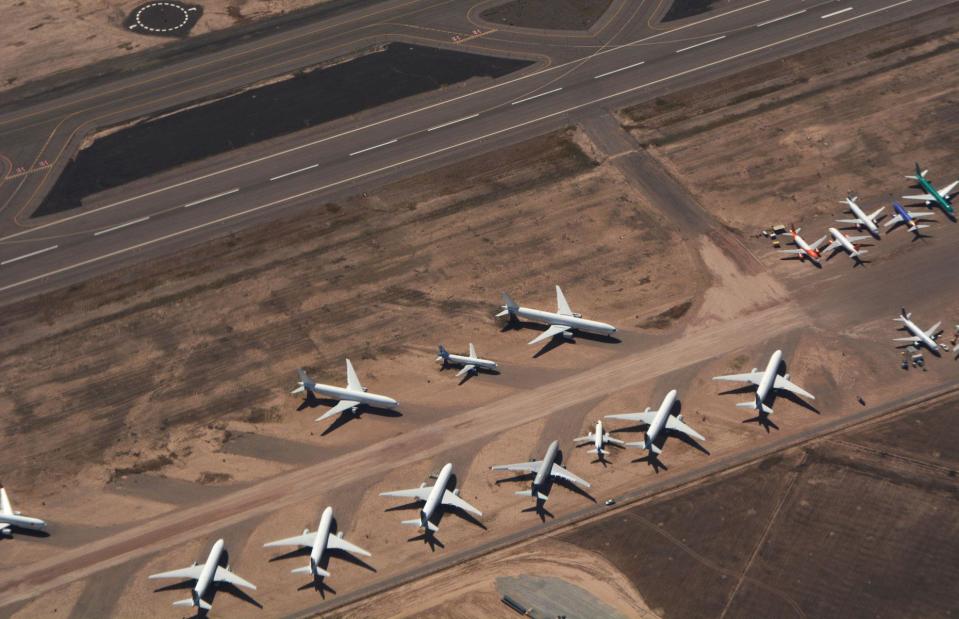
Shiiko Alexander/Alamy
Bone-dry Arizona has the largest concentration of major boneyards in the world, with four monster facilities, including Phoenix Goodyear Airport just outside the state capital in the heart of the Sonoran Desert. Originally known as NAF Litchfield Park, the airport came into being in 1941 and was initially used by the US Navy to build flight decks, as well as test-fly and deliver aircraft. Following the Second World War, the site primarily served as a storage location for military aircraft and hosted an astonishing 5,000 planes at one time. NAF Litchfield Park closed in the late 1960s and was reborn as a general aviation facility. It went back to being a boneyard and training facility.
Phoenix Goodyear Airport, Goodyear, USA
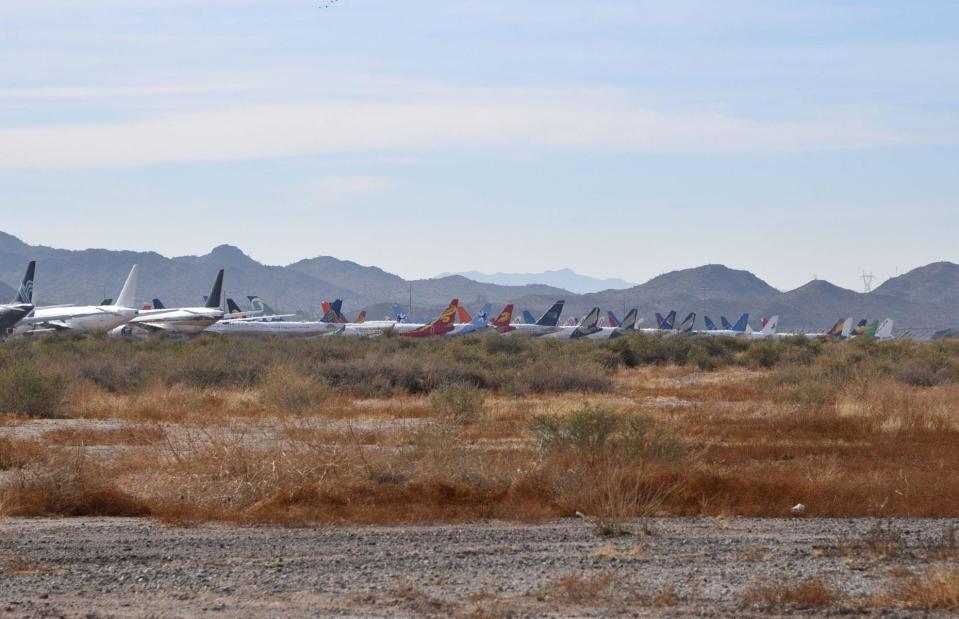
Thomas Trompeter/Alamy
Spanning 789 acres, the airport would appear to have plenty of space but a 28-acre expansion is in the pipeline, a testament to the facility's success. Phoenix Goodyear was used to store grounded 737 Max jets in 2019 and served as the refuge for numerous commercial airliners rendered out of service by the pandemic. The current crop of aircraft in residence is best viewed from nearby South Bullard Avenue, but the airport offers tours to select aviation enthusiasts.
Kingman Airport, Kingman, USA
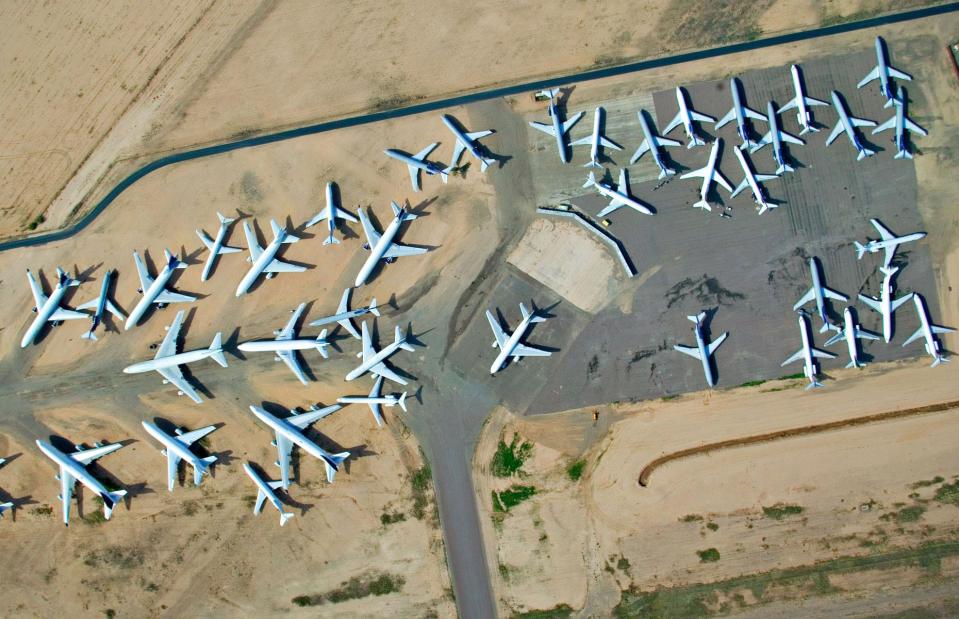
AZP Worldwide/Alamy
Staying in sunny Arizona, Kingman Airport is located around 180 miles (290km) northwest of Phoenix Goodyear. The airport's history dates back to the beginning of the Second World War when the site was used as an aerial gunnery training base. Following the conflict, Kingman was transformed into one of America's largest reclamation sites for obsolete aircraft. Over 10,000 planes were sold and scrapped at the facility, according to the Center for Land Use Interpretation. In 1949, the airport was turned over to civilian usage and an industrial park later opened. Today, the entire site spans 4,000 acres and includes a substantial boneyard for commercial planes.
Kingman Airport, Kingman, USA
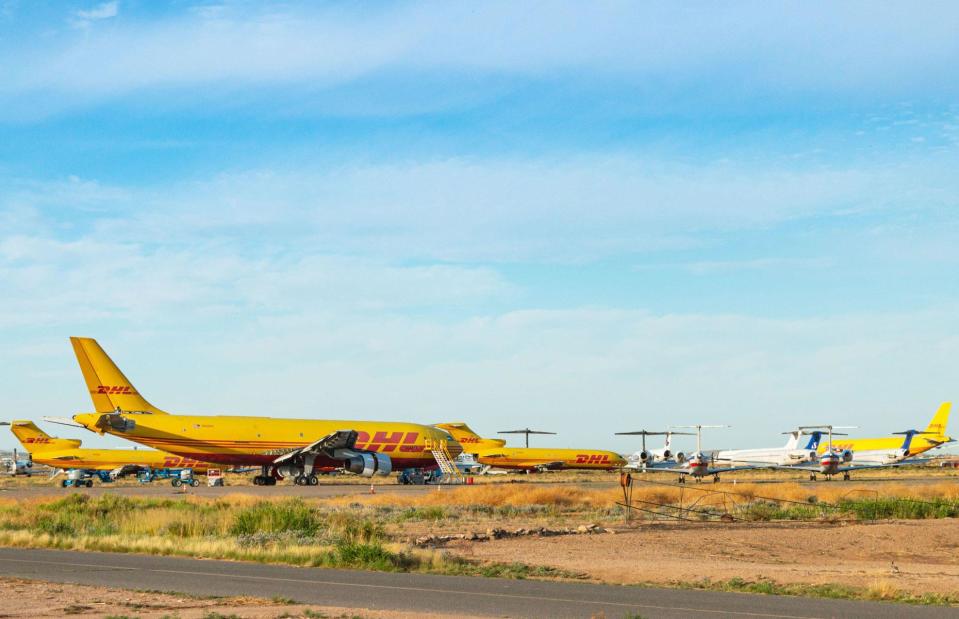
Hugh Williamson/Alamy
Companies including Kingman Airline Services and Jet Yard Solutions store and maintain passenger and cargo jets from the likes of American Eagle, SAS and DHL. During the early days of the pandemic, Kingman Airport was already home to 164 parked planes, as reported by Newsweek. At the time, the airport's general manager estimated the facility could hold around 350 airliners and was even looking at ways to further increase capacity, which gives you an idea of just how stretched the world's boneyards were back then.
Roswell Air Center, Roswell, USA
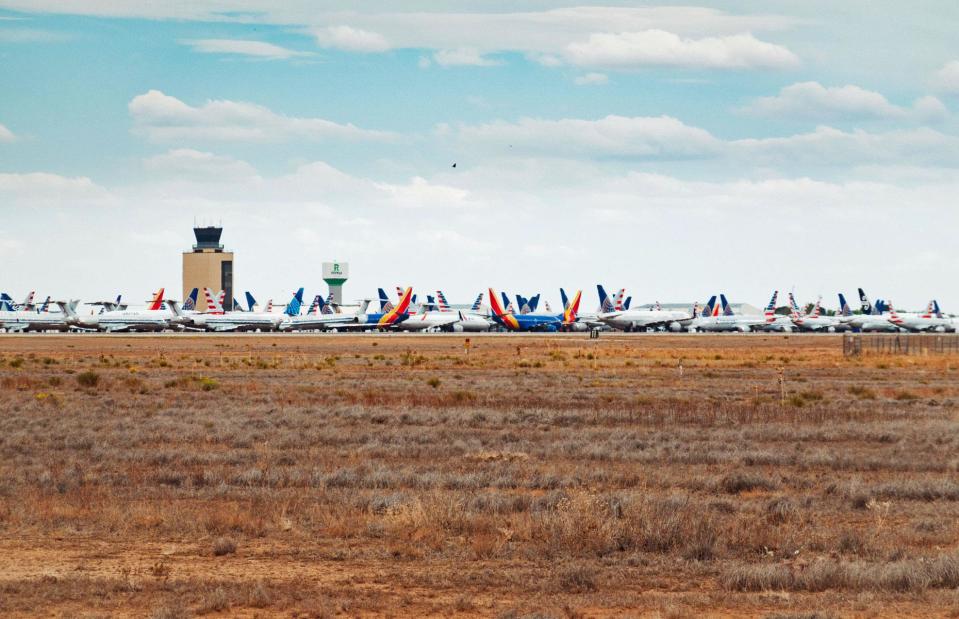
Hugh Mitton/Alamy
This airport in New Mexico was formerly the Walker Air Force Base, the site of the infamous Roswell UFO incident in 1947. It was developed following the closure of the military base in 1967 and now hosts an American Airlines passenger service to Dallas Fort Worth. The airport was used by Felix Baumgartner for his record-smashing freefall jump from the stratosphere in 2012, which is its other claim to fame, but Roswell Air Center is primarily a boneyard.
Roswell Air Center, Roswell, USA
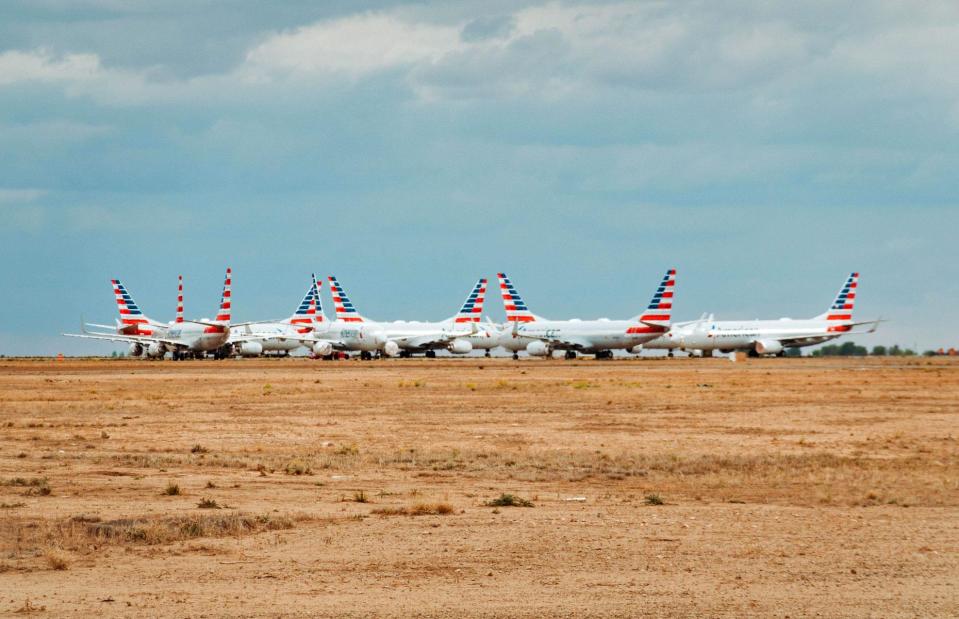
Hugh Mitton/Alamy
The go-to graveyard for American Airlines, the 5,000-acre facility houses several aircraft maintenance and recycling firms including MISTIC and AerSale. The boneyard has space for 800 planes according to the Los Angeles Times and stored almost 400 during the pandemic. Typically between 200 and 300 jets and other aircraft are being stored or dismantled on the site at any one time. The boneyard isn't open to the public but visitors are welcome to plane-spot (and maybe watch out for signs of aliens) from parts of the terminal. As a bonus, the Walker Aviation Museum, which charts the history of the military base, is located inside the building.
Pinal County Airpark, Marana, USA
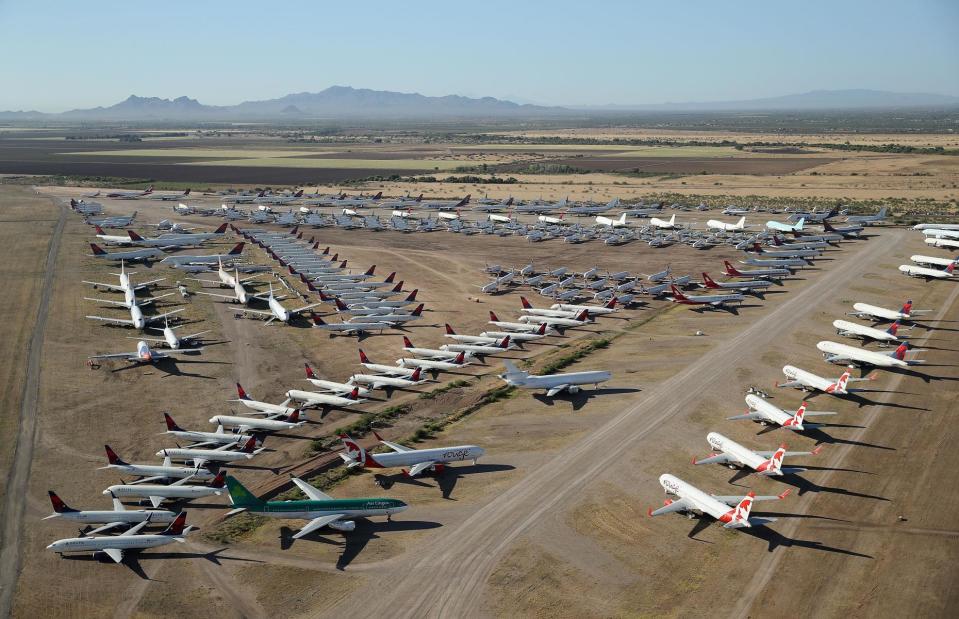
Christian Petersen/Getty Images
Located in Arizona's Sonoran Desert between Tucson and Phoenix, Pinal County Airpark encompasses 2,080 acres. The airport started out in 1942 as a military training centre. After the Second World War, the airpark was leased to various aviation companies. Intriguingly, the CIA is said to have operated covert flights in and out of the airpark during the Vietnam War. After the end of the war in 1975, the facility was rented out to an aircraft storage, maintenance and salvage firm. Pinal County Airpark has been a boneyard ever since, though it also features extensive training amenities.
Pinal County Airpark, Marana, USA
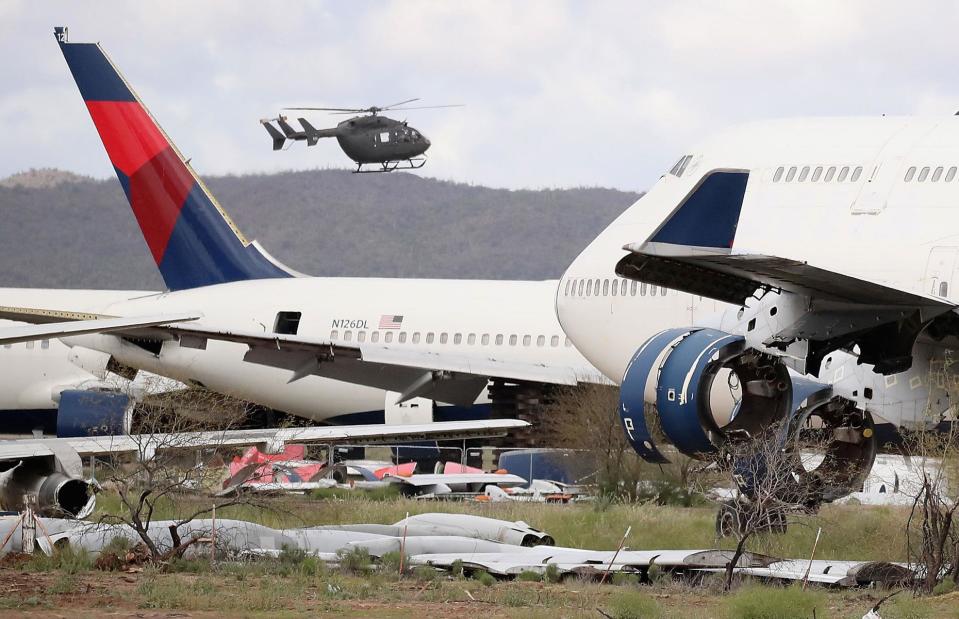
Christian Petersen/Getty Images
During the pandemic, the boneyard accommodated over 400 commercial planes, with Delta and United Airlines among the facility's leading clients. Ascent Aviation Services, the largest company on the site, had to go on a hiring spree to keep up with the fierce demand. Post-COVID, the Pinal County Airpark boneyard has gone back to what it does best: maintaining and scrapping aircraft. The airpark isn't usually open to the public, but aviation nerds will be delighted to discover it does have limited availability for tours.
Southern California Logistics Airport, Victorville, USA
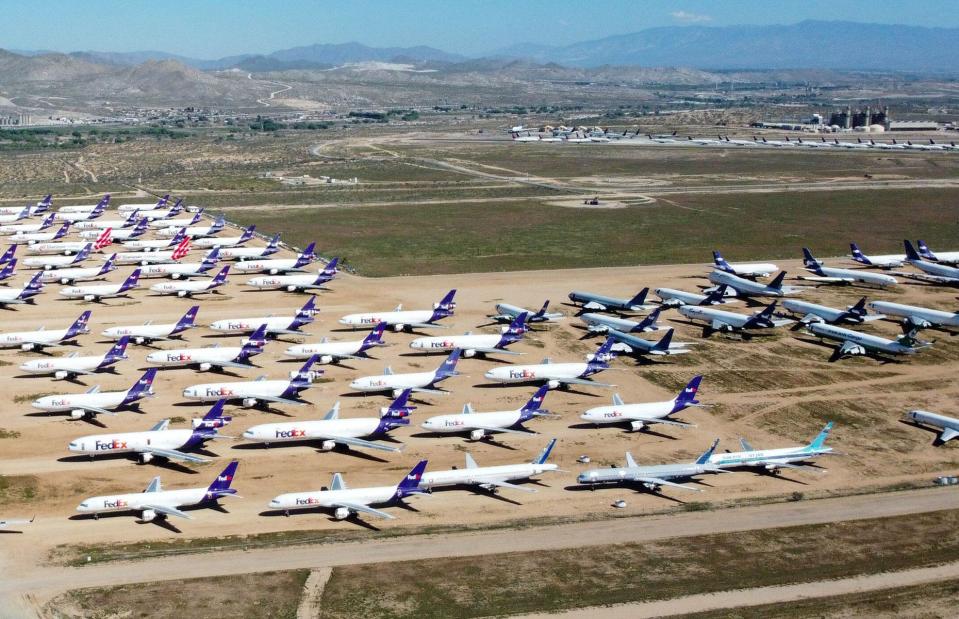
Newscom/Alamy
Stretching over 2,300 acres, Southern California Logistics Airport is located in Victorville around 80 miles (129km) northeast of Los Angeles at the edge of the Mojave Desert. Like so many other boneyards, the facility was originally a military base dating from the Second World War. It was reactivated during the Korean War and remained operational throughout the Cold War. The base eventually closed in the early 1990s and was repurposed as the Southern California Logistics Airport.
Southern California Logistics Airport, Victorville, USA
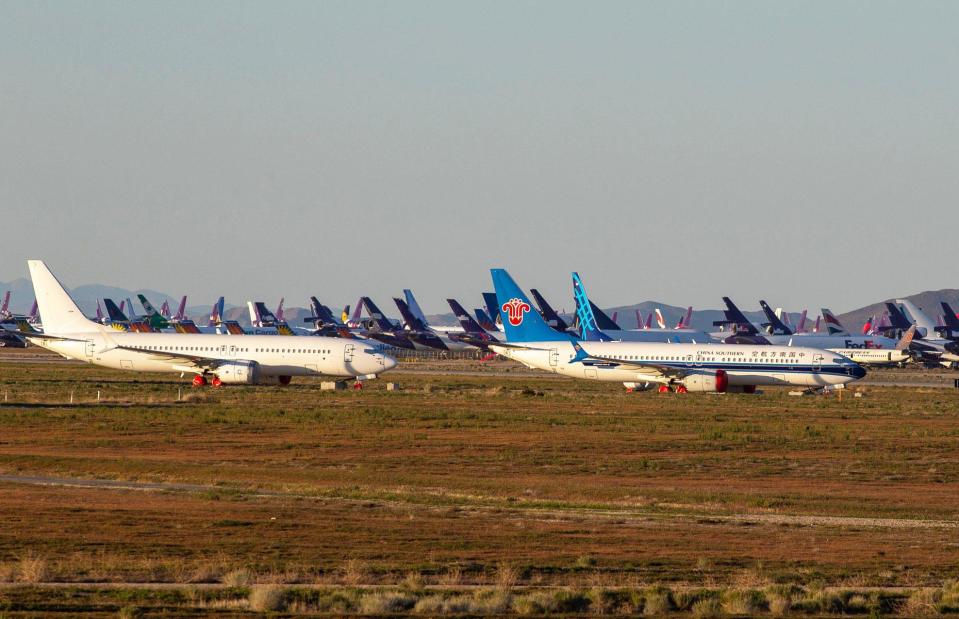
Newscom/Alamy
The airport is the major logistics hub for SoCal, handling an estimated 60% of the goods passing through the region. But its boneyard operations are super-important too. During the pandemic, the on-site ComAv storage facility was near its full capacity of 500 large aircraft, with everything from FedEx cargo planes to Qantas passenger jets stashed away there. The airport is frequently used as a set for movies, TV shows and commercials, thanks to its dramatic desert vistas, post-apocalyptic ambiance and proximity to Hollywood.
Mojave Air and Space Port, Mojave, USA
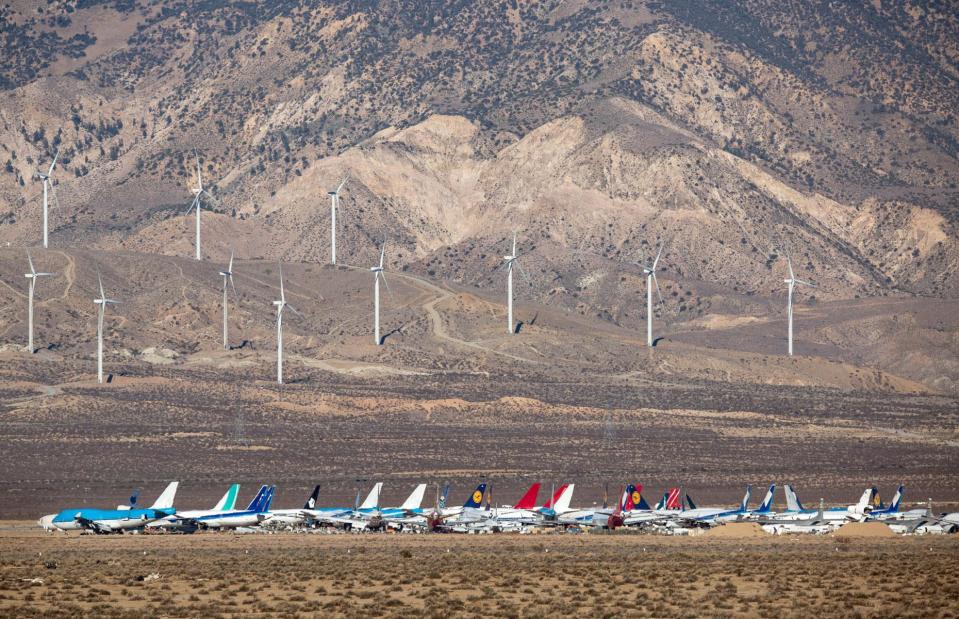
George Rose/Getty Images
Mojave Air and Space Port is located 55 miles (89km) northwest of Southern California Logistics Airport in the western Mojave desert. Starting out as a rural airfield, the 3,300-acre site was a military air station during the Second World War through to the Korean War, after which it was designated a testing ground for emerging aviation technologies, as well as a storage, maintenance and scrapping boneyard.
Mojave Air and Space Port, Mojave, USA
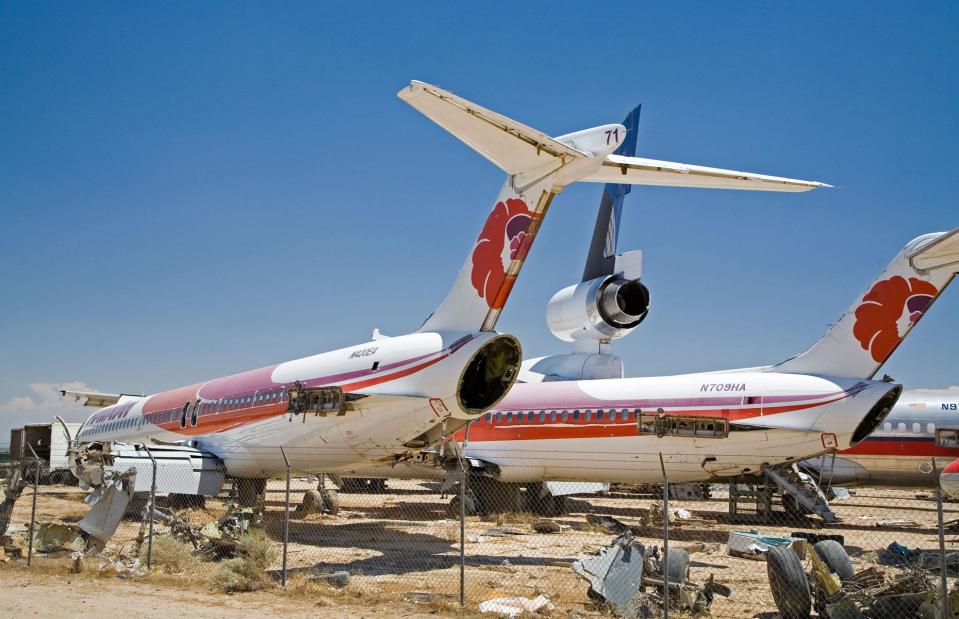
Jim West/Alamy
The aviation incubator is flourishing, with tenants that include Virgin Galactic. As for the boneyard, it had around 100 planes on site in 2023. Like Southern California Logistics Airport, Mojave Air and Space Port is a popular filming location. Movies shot there include 1990s blockbusters Speed and Hot Shots!, while rapper Lil Pump chose the boneyard as the backdrop for his 2019 Racks on Racks music video. Tours are unavailable but the Mojave Transportation Museum hosts family-orientated Plane Crazy Saturday events at the boneyard every third Saturday of the month.
Davis-Monthan Air Force Base, Tucson, USA
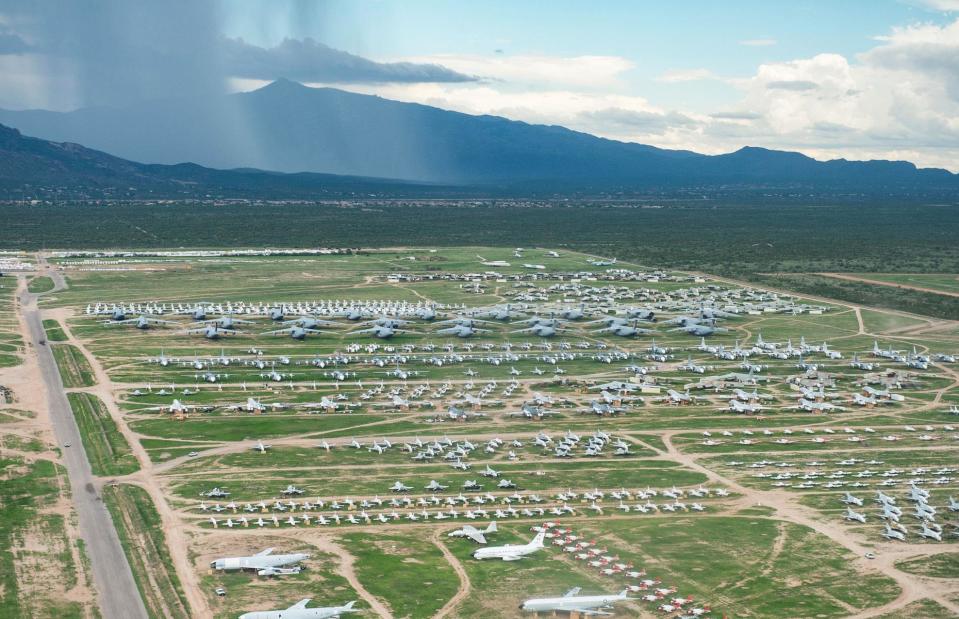
APFootage/Alamy
The largest aircraft storage and preservation facility in the world, the boneyard at Davis-Monthan Air Force Base in Tucson, Arizona sprawls over 10,633 acres and is home to as many as 4,400 aircraft at any one time. The 309th Aerospace Maintenance and Regeneration Group (AMARG), to give the boneyard its official name, was set up after the Second World War and is now the only repository of decommissioned military and government aircraft in the US.
Davis-Monthan Air Force Base, Tucson, USA
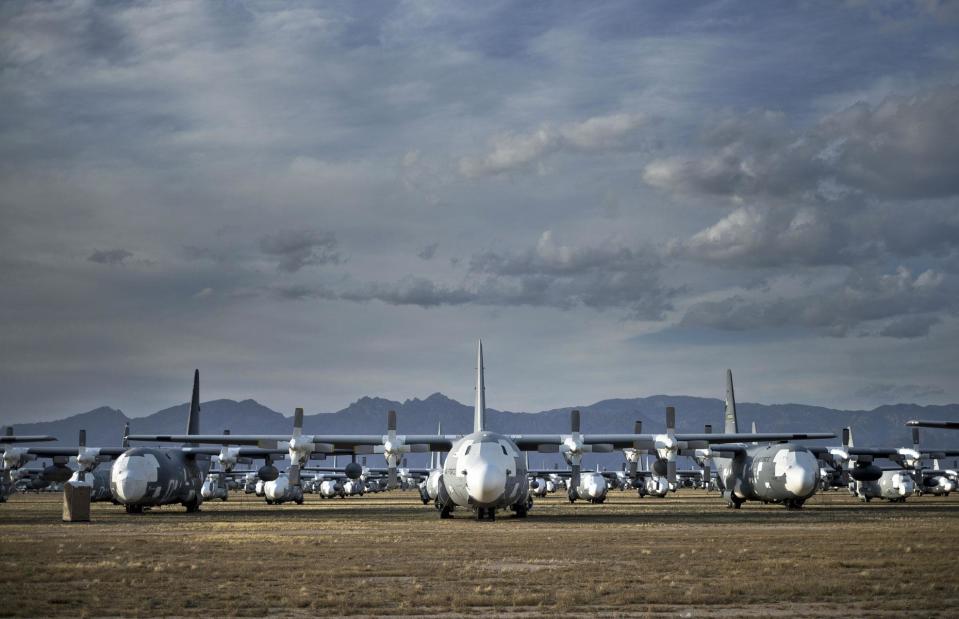
BRENDAN SMIALOWSKI/AFP via Getty Images
Conditions at Davis-Monthan are especially boneyard-friendly. Besides the extremely dry desert climate and thin high-altitude air, the top soils are alkaline and sit on extra-hard clay 'caliche' that allows ridiculously heavy planes to be parked without having to build pricey ramps. Hundreds of staff take care of maintenance and scrapping of the site's inventory of aircraft, which has even included a former Air Force One, and one of the programmes involves converting defunct fighter jets into drones. The boneyard is off limits to the public for security reasons but the adjacent Pima Air and Space Museum is worth visiting.

